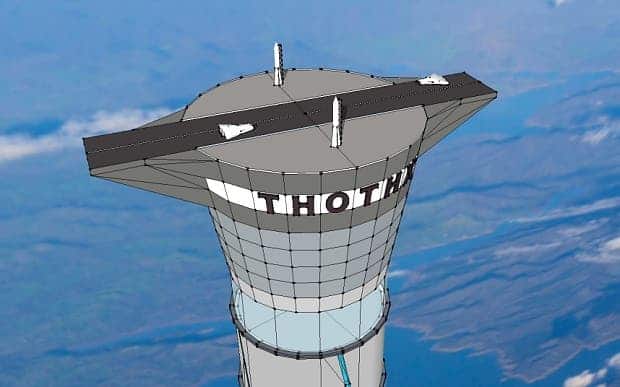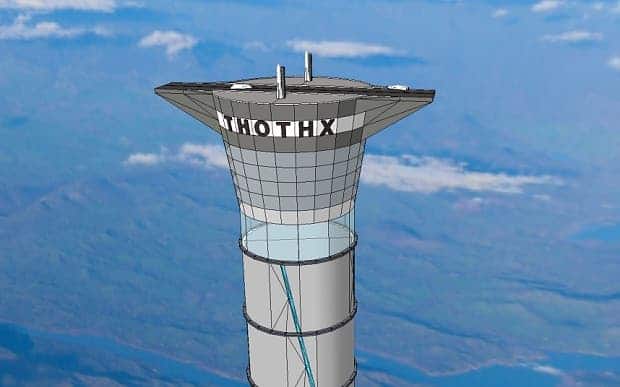Thoth Technology, a Canadian company, was granted an US patent for a space elevator. Technically, though, it’s not exactly a space elevator since cargo and astronauts would only be ferried about 12 miles above sea level into the stratosphere. From here, a shuttle would carry the cargo and astronauts to the International Space Station or some other dropzone in space (maybe even the moon) for a third of the cost it currently takes.
Building a space elevator to space might seem childish, but in the past few decades, at least, it’s been given very serious consideration. The first to propose the concept was Konstantin Tsiolkovsky in 1895, long before a working air machine was invented, let alone rockets. Tsiolkovsky’s idea could have easily been dismissed as a lunacy in the XIXth century, but some companies in the XXIst century actually see this working.
The biggest problem with a space elevator reaching towards orbit or even the moon, as some far-reaching minds have proposed, is structural instability. Carrying cargo hundreds of miles into space on a lift might one day be possible using the designer materials of the future. For instance, last year Penn State researchers devised an ultrathin diamond-like thread that’s only a few atoms across thick but is stronger than carbon nanotubes.
Thoth engineers envisioned something less ambitious, but far more practical. Instead of ferrying cargo into Earth’s orbit, this could be transferred into the stratosphere from where more conventional means of transportation could be used. Still, 12.4 miles above the Earth’s surface is very challenging. If ever completed, it would be 20 times taller than the current highest manmade structure, the Burj Khalifa, in Dubai.
“Landing at 12 miles above sea level will make space flight more like taking a passenger jet,” said Thoth President and CEO, Caroline Roberts.
To avoid collapsing, the elevator’s tower would be built using reinforced segments and inflatable sections to make it light, but flexible. Dynamic centering would be achieved using arrangements of fly-wheels to compensate for the tower bending. To reach the top, astronauts and cargo could embark on a pressurized car running through a tube in the center of the structure (similar to sending mail or the Hyperloop) or along the outside of the shaft like a funicular railway. The engineers estimate each car could carry up to 10 tonnes.
Besides sending cargo and astronauts to the ISS, the elevator can double as platform for scientific experiments, weather tower or tourism.





